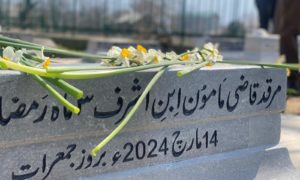‘Illegal speed breakers in Kashmir cause additional 10 percent fuel usage and damage in vehicles’ vital parts’
Srinagar: Putting the safety of public at risk, the government departments responsible for maintaining roads in Kashmir have not been following the prescribed standards for the installing speed breakers and humps.
With contractors and house owners building such speed breakers at will and at their preferred choice, the government it seems has turned a blind eye.
“After 6 years, in October 2017, they macadamized this road. But look at how many speed breakers there are. The speed breaker near the school has been moved to a spot where it is not even required. They are not even visible!” a local, Ajaz Ahmad at Sheikh Dawood Colony, Batamaloo says.
On such roads where the commuters’ driving skills are tested along with their ability to locate ‘hidden’ speed breakers on time, the one who fails the ‘test’ crashes on the road if they are riding a two wheeler, and damages the vehicle if they are driving a four wheeler.
Speed-breakers are precautionary traffic management devices that are meant to slow down the vehicles passing on the roads. Using the concept of virtual deflection, the speed breakers are, as per the set standards, supposed to be built by forming a hump of a 17-metre radius, 3.7-metre width and 0.10 metre of height on roads.
However, the region’s engineers term the installation of speed breakers ‘completely uncalled for and illegal’, and in turn, say that it is the locals who ‘force’ them to construct these devices.
Tufail Ahmad Beigh, an Engineer of the Public Works Department (Road and Building), Jammu and Kashmir said, “Macadamisation of a road is a hectic job. With the departmental duty and local pressures, no engineer will install a speed breaker because he has got no time and resources to do so, nor does he have the permission to do so.”
“But, the aggressive locals force the supervisors or engineers to macadamise the road as per their dictation. It is the locals who construct these speed breakers where ever they think it is required,” Beigh adds.
Furthermore, the gap between any two speed breakers can vary from 100 to 120 metres (centre to centre). The drivers are to be warned about the presence of speed breakers through a suitable advance warning sign installed ahead of the speed breaker.
Speed Breakers should also be painted with alternate black and white bands to give an additional visual warning.
However, there is hardly any place in the city where these standards have been followed.
In Kashmir, one often witnesses the installation of such devices during the ‘macadamization’ of roads. Three to four speed breakers are installed without any attention to regulations, and not properly highlighted, according to locals’ complaints.
“For their personal benefit, they ask us to install it near their home or anywhere on the road. We can do anything since we have to build the road and the locals live there. They can even attack us! There is interfere even if we call the police,” Tufail Ahmad Beigh, an Engineer of the Public Works Department (Road and Building), Jammu and Kashmir said, stressing on the fact that speed breakers shouldn’t exist in such areas.
While talking to Free Press Kashmir, he recalled an incident where he got a road macadamized after which the area’s locals had installed a speed breaker by themselves. In the evening, Beigh was informed about an accident that had been caused by the speed breaker which had camouflaged with the road and had made it hard for the commuters to spot them.
“The guy got 12 stitches,” Beigh said, referring to the driver. “Wherever it is supposed to be installed, it has to be done as per the permissions which we get from the Divisional Commissioner’s office,” he said.
He also said that the speed breakers are not standardized according to the prescribed steps since most of them are illegal.
As per him, speed breakers in Kashmir cause an additional 10 percent fuel usage and damage in the car’s vital parts. Apart from the abnormal frequency and nonstructural designs, what risks the lives of people is the absence of any warning sign on or near the speed breakers.
Time and again, the High Courts have asked to entirely clear these devices and humps from the National Highways or other roads. While engineers here agreed to the verdict, saying that the speed breakers ‘should not be there at all’, the valley is full of such roads and lanes that have these ‘sloppy’ humps.
As per the Police Control Room Srinagar, the details about the accidents that have occurred particularly due to the speed breakers are not available with the department. However, one can often witness such incidents any any given lane or bylane.








